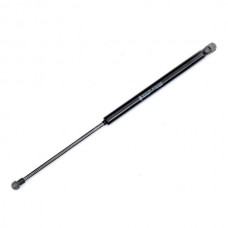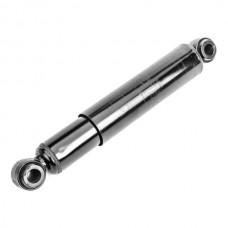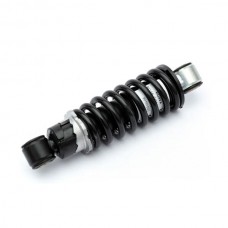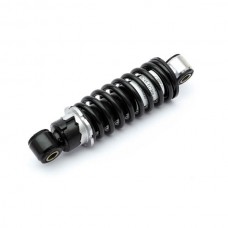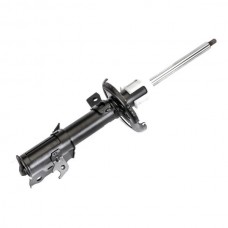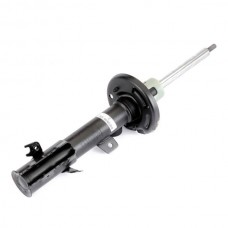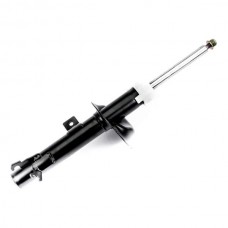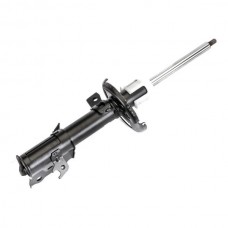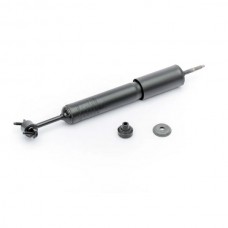SHOCK ABSORBERS
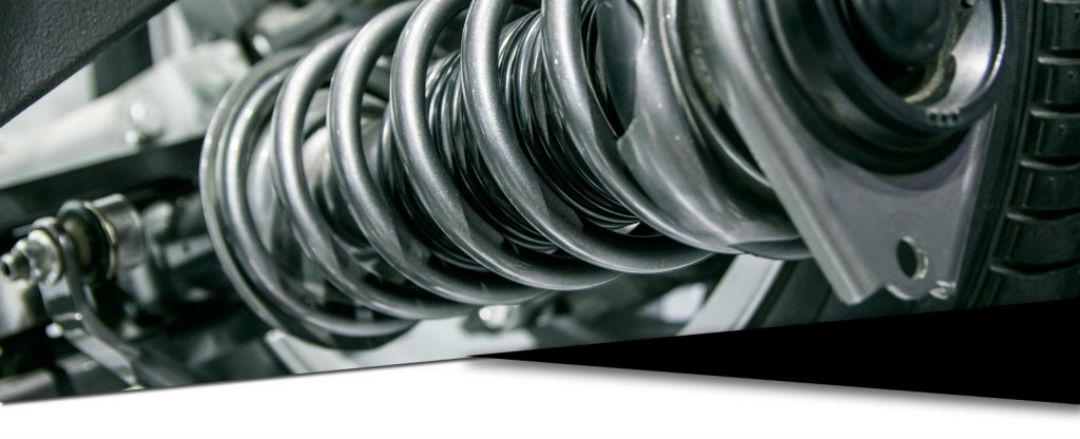
SPARE PARTES - SHOCK ABSORBERS
WHAT IS SUSPENSION CONTROL?
According to Newton's first law, a moving body will continue to move in a straight line until another force acts on it. Newton's second law says that for every action there is an equal and opposite reaction. In the case of the automobile, whether the disturbing force is in the form of a gust of wind, in the form of a slope in the road or the cornering forces produced by the tires, the force causing the action and the force resisting the action will always be in balance.
There are many things that affect moving vehicles. Weight distribution, speed, road conditions, and wind are some of the factors that affect how vehicles move on the road. However, under all of these variables, the vehicle's suspension system, including the shocks, struts, and springs, must be in good condition. Worn suspension components can reduce vehicle stability and driver control. They may also accelerate wear on other suspension components.
Replacing worn or inadequate shocks and struts will help maintain good suspension control by:
- Control the movement of springs and suspension
- Provide smooth braking and maneuverability
- Prevent premature tire wear
- Help keep tires in contact with the road
- Maintain dynamic wheel alignment
- They control bounce, roll, pitch, pitch, and slump during
- vehicle acceleration
- Reduce wear on other vehicle systems
- Promote even and balanced tire and brake wear
- Reduce driver fatigue
Suspension concepts and components have changed and will continue to change dramatically, but the basic goal remains the same: Provide steering stability with good handling characteristics.
Maximize passenger comfort
Achieving these goals under all variables of a moving vehicle is known as suspension control.
KNOWLEDGE OF VEHICLE DYNAMICS
BASIC TERMINOLOGY
To start this training program, you need to have some very basic information. The chassis is what connects the tires and wheels to the body of the vehicle. The chassis consists of the frame, suspension system, steering system, tires, and wheels.
The frame is the load-carrying structural member that supports the engine and body of an automobile, which are in turn supported by the suspension and wheels.
The suspension system is an assembly that is used to support weight, absorb and cushion road impacts, and help maintain tire contact, as well as the proper correct relationship between the wheels and the chassis.
The steering system is the entire mechanism that allows the driver to guide and steer a vehicle.
The side-to-side distance between the center line of the tires on an axle is called the transverse distance. The distance between the center line of the front and rear tires is called the wheelbase. If the vehicle is aligned correctly, the wheels will roll in a line that is parallel to the geometric center line of the vehicle.
You must also understand that the tires and wheels make the movement of the vehicle possible. The amount of grip or friction between the road and the tires is the main factor limiting how the vehicle accelerates, maneuvers around corners, and stops. The higher the friction, the faster the car can accelerate, veer, and stop.
The contact of a vehicle's tires with the road is affected by various forces. Vehicle dynamics is the study of these forces and their effects on a moving vehicle. Our discussion will focus on how these forces affect handling and we will make some considerations on how they affect acceleration and deceleration.
BASIC PRINCIPLES OF MANEUVERABILITY
The geometry, suspension and steering design of a vehicle affect the handling of the vehicle. To better understand the term "maneuverability", we can examine the following basic principles that contribute to good maneuverability:
Isolation from the Highway
Road isolation is the vehicle's ability to absorb or isolate road impacts so that they do not reach the passenger compartment. The degree to which this is accomplished is controlled by the condition of the suspension system and its components.
A properly functioning suspension system allows the vehicle body to ride relatively undisturbed while traveling on uneven roads. This is accomplished through the combined use of hydraulic bushings, springs, and shock absorbers.
The springs support the weight as the vehicle travels on the road. When a vehicle encounters a pothole in the road, the bushings receive and absorb the effect of the road, while the springs compress and store kinetic energy. This energy is then released, causing a rebound in the vehicle's weight. The speed at which the springs compress and rebound is controlled using a hydraulic shock absorber, such as a shock absorber or strut. The result of this action is to limit the amount of road bump felt in the passenger compartment.
Adherence to the Road
Road grip is the degree to which a car maintains contact with the road surface in various types of directional changes and in a straight line. Remember that the vehicle's ability to maneuver, brake and accelerate depends primarily on the adhesion or friction between the tires and the road.
Tire force variation is a measure of the vehicle's ability to grip the road and is directly influenced by the performance of the shock absorbers or struts. Shock absorbers and struts help maintain vertical loads placed on the tires by providing resistance to the rebound, roll and lean of the vehicle during weight transfer. They also help reduce pitch during braking along with settling during acceleration, for balanced suspension.
Worn shocks and struts can allow excessive vehicle weight transfer from side to side and front to back, reducing the tires' ability to grip the road. Due to this variation in tire contact with the road, the handling and braking performance of the vehicle may be reduced. This can affect the safe operation of the vehicle and the safety of the people inside it. Therefore, shocks and struts are safety components.
Tire load changes as a vehicle's center of gravity shifts during acceleration, deceleration, and cornering. The center of gravity is a point near the center of the car; It is the balance point of the car.
The size of the four traction contact patches located on the tires also varies with changes in tire load. When the vehicle brakes, the inertia will cause a shift in the vehicle's center of gravity and weight will be transferred from the rear tires to the front tires. This is known as pitching. Similarly, weight will be transferred from front to rear during acceleration. This is known as a settlement.
Consistent control of vehicle weight transfer and suspension movement enhances the vehicle's ability to adhere to the road and ultimately its safe operation.
Turning ability
Turning ability is defined as the vehicle's ability to navigate a curved path. It is also known as cornering power or lateral acceleration. There are many things that can affect a vehicle's ability to turn, such as:
- Construction
- Tire tread
- Road surface
- Alignment
- Tire loading
As a vehicle takes a curve, centrifugal force pushes outward on the car's center of gravity. The centrifugal force is resisted by the pull of the tires. The interaction of these two forces moves the weight from the side of the vehicle that is on the inside of the curve to the outside of the car and the car leans. As this happens, the weight leaves the springs on the inside side and that side of the vehicle goes up. This weight goes to the springs located on the outer side and that side of the vehicle goes down. This is what is known as body roll.
When the turning ability requirement of a specific maneuver is less than the traction that can be provided by the tires, the car will go where it is directed and directed. However, if the steering force exceeds the available traction on the tires, the tires will slip on the road surface and spin.
vs Jun 2021
![]()
![]()
![]()
![]()
MPN: 7S55/B406A10/AA/
US$532,59 Ex Tax: US$440,16
MPN: BC45/18080/AA/
US$1.432,62 Ex Tax: US$1.183,98
MPN: BC45/5C368/BB/
US$1.098,58 Ex Tax: US$907,92




